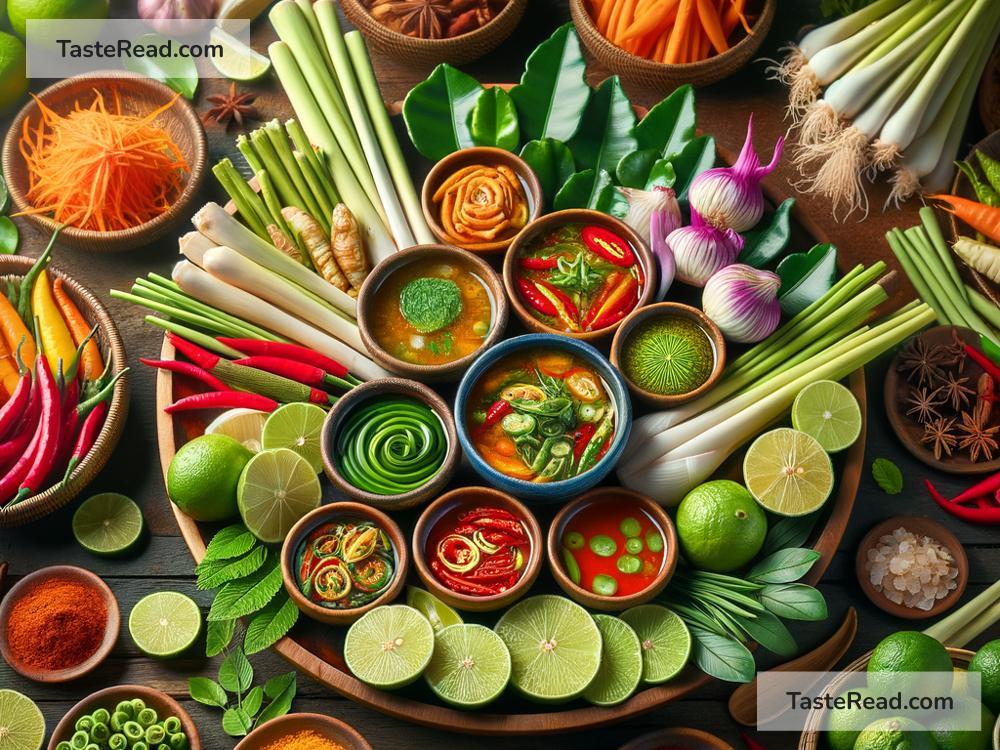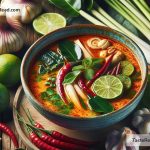If you’ve ever sunk your teeth into a juicy piece of mango smothered in sticky rice or felt the fiery kick of a perfectly seasoned Pad Thai, you’ve experienced the magic of Thai cuisine. This culinary tradition from the heart of Southeast Asia is famous for its ability to walk the fine line between sweet, sour, salty, and spicy – creating a flavor explosion in every bite.
Thai cuisine is a celebration of balance. It’s like a well-conducted orchestra, where every ingredient plays its part to create a harmonious symphony of flavors. It’s not just about throwing in chili for heat or dousing a dish in sugar to make it sweet. It’s about understanding how these flavors interact, complement, and elevate each other. Let’s dive into how Thai food achieves this delicate balance, making it one of the most vibrant and beloved cuisines worldwide.
Sweet: The Delicate Dance of Sugar and Honey
Sweetness in Thai food often comes from natural sources like palm sugar, honey, and fresh fruit. These ingredients add a delicate sweetness that contrasts beautifully with the more robust flavors in a dish. Think of the gentle caress of a breeze rather than a gusty wind. For example, in a classic Massaman curry, the subtle sweetness of coconut milk and palm sugar balances the heat from the chili and the earthiness of the spices. It’s like a culinary hug, where the sweetness soothes your palate and prepares it for the next wave of flavors.
Sour: The Zesty Spark of Life
The sour element in Thai dishes is the spark that brings everything to life. This zesty punch often comes from ingredients like tamarind, lime juice, and green mango. It’s the splash of lime in a bowl of Tom Yum soup that makes your tastebuds dance, or the tamarind in a Pad Thai that cuts through the richness and resets your palate. Just like a drop of paint can change the entire tone of a painting, the sour component in Thai cuisine adds vibrancy and depth, ensuring the flavors remain lively and engaging.
Salty: The Foundation of Flavor
Salt is foundational in cooking worldwide, and Thai cuisine is no exception. In Thai food, saltiness often comes from fish sauce, soy sauce, or oyster sauce. These ingredients do more than just add saltiness; they bring depth and umami, which is often described as a savory taste. Think of saltiness as the canvas upon which the other flavors paint their masterpiece. A splash of fish sauce in a green curry not only seasons the dish but also enhances the mellow sweetness of the coconut milk and the heat of the green chilies.
Spicy: The Bold Stroke
Spicy is perhaps what Thai cuisine is best known for. But it’s not about mindless heat; it’s about adding excitement and intensity. The use of fresh chilies, pepper, garlic, and ginger can elevate a dish from good to unforgettable. The thrill of the heat from a spicy Papaya Salad or a fiery Basil Chicken is balanced by the other elements, ensuring that while your mouth might be on fire, you can’t help but reach for another bite. It’s this bold stroke that gives Thai food its spirited character.
The Balancing Act
So, how does Thai cuisine balance these diverse flavors? It’s all about the proportions and the understanding that every ingredient has a role to play. A typical Thai dish will not overwhelm you with sweetness or burn your mouth with spice alone. Instead, it will take you on a journey where each bite reveals a different combination of sweet, sour, salty, and spicy – a true flavor explosion.
This balance is not achieved by accident. It’s a testament to the skill and intuition of Thai cooks, who taste and adjust their dishes continually, ensuring that no single flavor dominates. It’s this meticulous balancing act that makes Thai cuisine so intriguing and satisfying.
Experience the Explosion
Experiencing the explosion of flavors in Thai cuisine is about more than just eating; it’s about immersing yourself in a rich tradition that values harmony and balance. Whether you’re tucking into a comforting bowl of Khao Soi or enjoying the refreshing crunch of a Som Tum, you’re experiencing a centuries-old tradition of flavor balancing.
So, the next time you enjoy a Thai meal, take a moment to appreciate the intricate dance of sweet, sour, salty, and spicy. It’s this delicate balance that makes Thai cuisine a true flavor explosion, leaving your tastebuds yearning for more.


